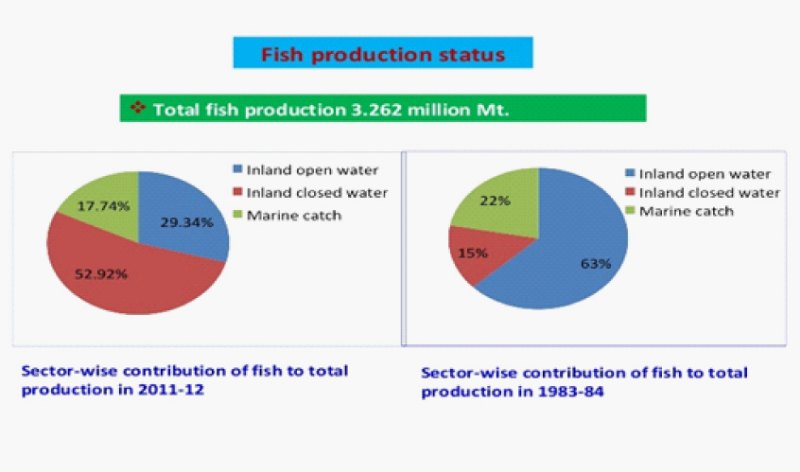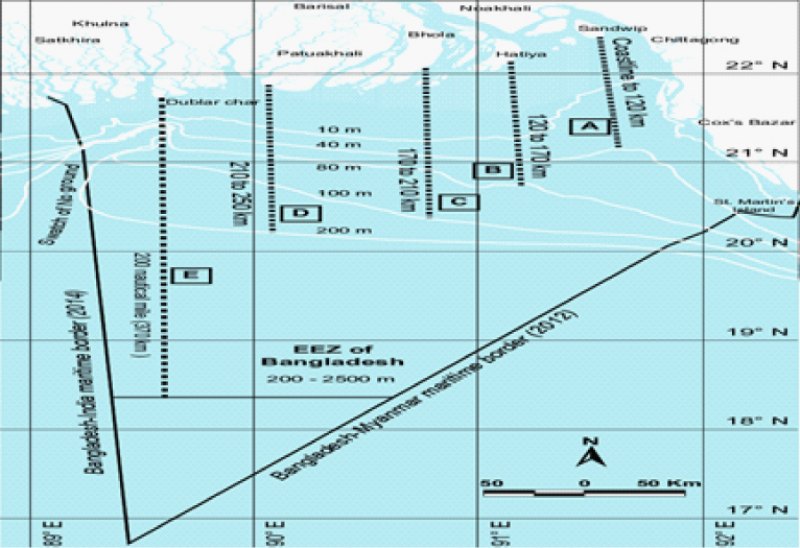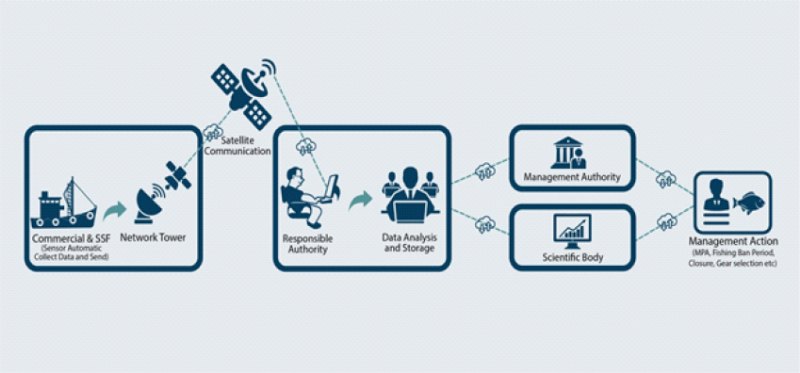Afifat Khanam Ritika : Bangladesh is blessed with an approximately 700 km long coast with nearly 1 18,813 sq. km of maritime area. According to a 2001 population census, Bangladesh’s coastal zone has a population of 35.1 million, 28 percent of the total population. Most of the coastal people of this area live their lives by fishing, providing the primary source of food & nutrition. The marine zone’s natural system generates a multitude of natural living (Fish, seaweed, crustacean and other commercially important living species) and non-living resources (Oil, gas, minerals, etc.).
But among all marine resources, marine fisheries are the most prominent sector to exploit and enrich the country economy with less effort. Marine fisheries contribute at least 20% of total fish production in Bangladesh, > 90% of which comes from artisanal fishing (Ahmad 2004). Bangladesh has ranked 11th in marine fish production in 2018 (FAO, 2018). Though there is no explanation on this ranking, the general knowledge explained that this may occur due to the large variety of fish species and rich stock in the Bay of Bengal as Bangladesh is still backward compared to technological competence with the developed country.
If we see the marine contribution in the country’s total fish production, it reduced from 22% to 17.74% in 2011-12 (Figure 1). So it indicates that with time no advancement has occurred in the marine sector of Bangladesh.

Bangladesh is estimated to catch only 0.70 million tons of fish every year out of the total 8 million tons of fish available in the Bay of Bengal (The Daily Star May 14, 2018).
So, where is the gap?
Bangladesh marine fishing is effectively limited to continental shelf region up to <200 m, but most fishing boats and vessels operate in the coastal areas within 40 m depth because of insufficient facilities and advance fishing technology.
The scientist described that fishing grounds could be divided into five distinct zones (A-E), of which the nearest two zones (A and B) are subject to active fishing, and the remaining zones (C, D and E) have the potential to provide new business opportunities (Figure 2). According to the Bangladesh catch history, starting from the coastline, up to a depth of 40 m and a distance of 120 km is used by the artisanal fishers. The fishing zones extending up to 80 m depth and 170 km distance are for trawling. All other zones are either lightly fished or unexploited at present.

Intensive harvesting from the same region with different types of destructive and unplanned gear is a matter of extinction of many commercially important species. Overfishing and no capability for extending fishing zones are warned of capture reduction (Figure 1).
For any planned or sustainable catch, the first and foremost requirement is enough data with advance fishing technology. The country is fishing blindly; there is no enough data on fish stock assessment. Marine fisheries surveys in Bangladesh’s marine waters dated back to 1857, and the latest survey is about 25 years old. Fisher community/ fishing companies are not getting interest on technological modernization considering cost and catch profit.
No established method has been used in the last 25 years to collect data for any tangible idea on marine catch or stock in Bangladesh. Fishery dependent data collection for necessary information is generally conducted by various fisheries stakeholders, including fishers, fisheries managers, fish buyers and processors, or even third parties such as consumers or non-profit agencies. Such data are recorded via logbooks and vessel trip reports, on-board observers, landing records, port sampling or dockside surveys, point of the first sale, telephone surveys or experiential knowledge, and recorded at the capture site landing sale or even later by the survey. For Example- The yearbook of fisheries statistics of Bangladesh that publish yearly report on fish, collect data through each arrival of a fishing trawler from their fishing trip and fisheries companies every month.
The process of moving and processing data from the point of the collection into management decision-making is often slow or non-existent, with time lags regularly exceeding the pace of rapidly changing ocean conditions and their impact on fish stocks (National Research Council 2000). Depending on the late report, any concrete management decision, catch effort or stock assessment is not possible in reality.
To avoid the above stumbling block and reforming the developed countries procedure, the author has proposed an idea using a high tech system to collect timely data from the fishing vessel-

The above figure presents an advanced method in which, using a sensor and video recording, the data on vessel catch will be collected and sent to the network system. The system will collect into the satellite communication, and responsible authority will reserve, store, and analyze the data after receiving it. The management authority will then collect the synthesized data or scientific body for decision making on management strategy (MPA, Closure, Ban period, catch limitation, gear restriction or others). So, this could be an instant real data collection method where physical manipulation or any other error will be excluded. Maybe it seems expensive, but in the long term, the return will be beneficial. Without investment and advancement marine Governance is not possible in anyways.
If we use high tech for timely data collection, it will help to manage the marine fisheries in several ways like-
- Assessing the condition of the stocks on an area or ecosystem basis and in connection with the fishery its support
- Developing and implementing regulations to explore the fish stocks in a sustainable manner
- Monitoring the biological, economic and social effects of the implemented rules and regulation
- Development of advanced, cost-effective technology for bulk catch
- Development of Management Strategies for sustainable catch
- Achieving the goal of SDG-14
Achieving effective fisheries management is increasingly vital as overfishing threatens fish stocks in our marine capture, reducing biodiversity, altering ecosystem functioning and jeopardizes the food security and livelihoods. Fisheries management is a complex socio-political process, and there is no silver bullet to improve our marine fisheries sector. However, access to accurate, consistent data about how a fishery is doing and what, where and how much of a species are being caught is a fundamental component for establishing effective fishery management and also develop innovative technology, regardless of the fishing sector or management system (Beddington, Agnew, & Clark, 2007).
Author: Research Officer, Bangladesh Institute of Maritime Research and Development (BIMRAD), Naval Headquarters Complex, Banani, Dhaka-1213, Bangladesh.
 Agrinews24 কৃষির সাথে, কৃষকের পাশে
Agrinews24 কৃষির সাথে, কৃষকের পাশে





















